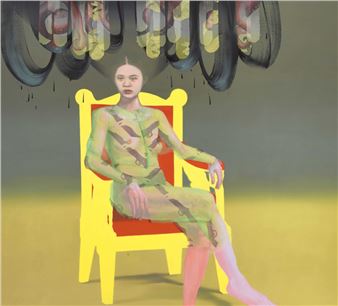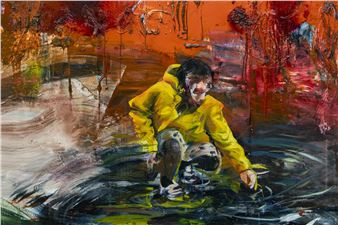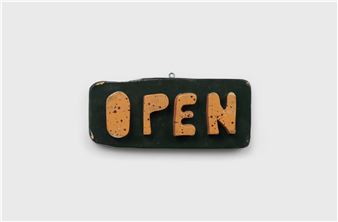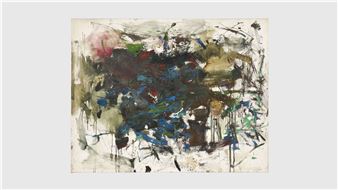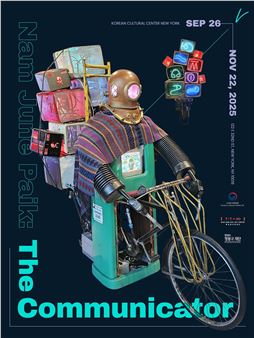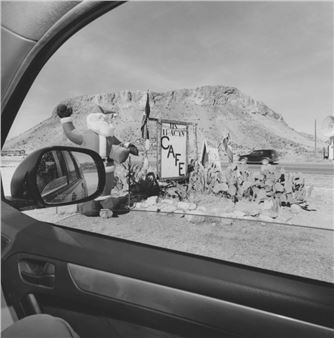John Fahey & Rosha Yaghmai
Tif Sigfrids is happy to announce the opening of an exhibition featuring work by John Fahey and Rosha Yaghmai in our New York location (75 E. Broadway). The show will open with a reception Saturday, February 26th from 4-6 PM and remain on view through April 2nd. This is the galleries second time exhibiting the work of Fahey and the first time presenting the work of Yaghmai. The show includes three new sculptures by Rosha Yaghmai and four paintings created by John Fahey at the turn of the 21st century.
The current exhibition brings into dialogue two distinct strategies associated with the cultural production of ÔÇ£primitivesÔÇØ whether of the self-identified kind or the kind that is described as such by others. While the categorization of FaheyÔÇÖs music as a sort of ÔÇ£American PrimitivismÔÇØ was mostly brought up in the context of his foregoing of formal training, it was also used with reference to his habit of de-tuning his instrument. The latter practice changes the location of the chords and makes playing according to standard notation impossible. Yet, in the words of the public-television music teacher Laura Weber, it also allowed Fahey to ÔÇ£discover all kinds of new things.ÔÇØ
The paintings presented here were painted by Fahey on unused poster boards which he stumbled upon by chance at a thrift store in Salem, Oregon in 1999. Working on the floor of his garage, Fahey substituted his hands, feet, andÔÇöon at least one occasionÔÇöhis naked butt, for paint brushes. While the acrylic medium was still wet, Fahey sometimes pressed two paintings together, creating a personal litany of Rorschach style investigations to which he added spray paint and more acrylic paint to complete the work. FaheyÔÇÖs paintings, like his music, bring a sense of unresolvedness, irreplicability, and dissonance to the tradition of abstract gestural painting.
In contrast YaghmaiÔÇÖs practice is that of a bricoleur. Revolving around the combination of things in ways that they were not intended to, bricolage has been compared to a sort of engineeringÔÇöa way of solving problemsÔÇöthat works from what is readily available rather than from goals attached to means. The sculptures included in the current exhibition are made from steel pipes found on the street and in the urban landscape. Bent, polished, re-finished, and welded together in continuous bands, the OptometersÔÇöas Yaghmai calls these hanging and standing sculpturesÔÇörevisit some of the key problems of modernist and minimalist sculpture without relinquishing their own fundamentally put-together character.
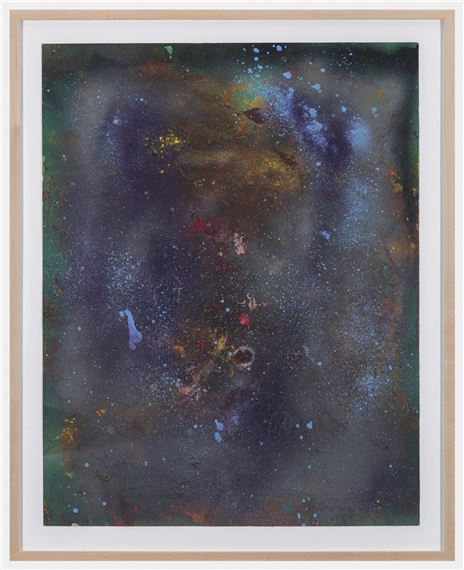
Recommended for you
Tif Sigfrids is happy to announce the opening of an exhibition featuring work by John Fahey and Rosha Yaghmai in our New York location (75 E. Broadway). The show will open with a reception Saturday, February 26th from 4-6 PM and remain on view through April 2nd. This is the galleries second time exhibiting the work of Fahey and the first time presenting the work of Yaghmai. The show includes three new sculptures by Rosha Yaghmai and four paintings created by John Fahey at the turn of the 21st century.
The current exhibition brings into dialogue two distinct strategies associated with the cultural production of ÔÇ£primitivesÔÇØ whether of the self-identified kind or the kind that is described as such by others. While the categorization of FaheyÔÇÖs music as a sort of ÔÇ£American PrimitivismÔÇØ was mostly brought up in the context of his foregoing of formal training, it was also used with reference to his habit of de-tuning his instrument. The latter practice changes the location of the chords and makes playing according to standard notation impossible. Yet, in the words of the public-television music teacher Laura Weber, it also allowed Fahey to ÔÇ£discover all kinds of new things.ÔÇØ
The paintings presented here were painted by Fahey on unused poster boards which he stumbled upon by chance at a thrift store in Salem, Oregon in 1999. Working on the floor of his garage, Fahey substituted his hands, feet, andÔÇöon at least one occasionÔÇöhis naked butt, for paint brushes. While the acrylic medium was still wet, Fahey sometimes pressed two paintings together, creating a personal litany of Rorschach style investigations to which he added spray paint and more acrylic paint to complete the work. FaheyÔÇÖs paintings, like his music, bring a sense of unresolvedness, irreplicability, and dissonance to the tradition of abstract gestural painting.
In contrast YaghmaiÔÇÖs practice is that of a bricoleur. Revolving around the combination of things in ways that they were not intended to, bricolage has been compared to a sort of engineeringÔÇöa way of solving problemsÔÇöthat works from what is readily available rather than from goals attached to means. The sculptures included in the current exhibition are made from steel pipes found on the street and in the urban landscape. Bent, polished, re-finished, and welded together in continuous bands, the OptometersÔÇöas Yaghmai calls these hanging and standing sculpturesÔÇörevisit some of the key problems of modernist and minimalist sculpture without relinquishing their own fundamentally put-together character.

 ARTISTS
ARTISTS







